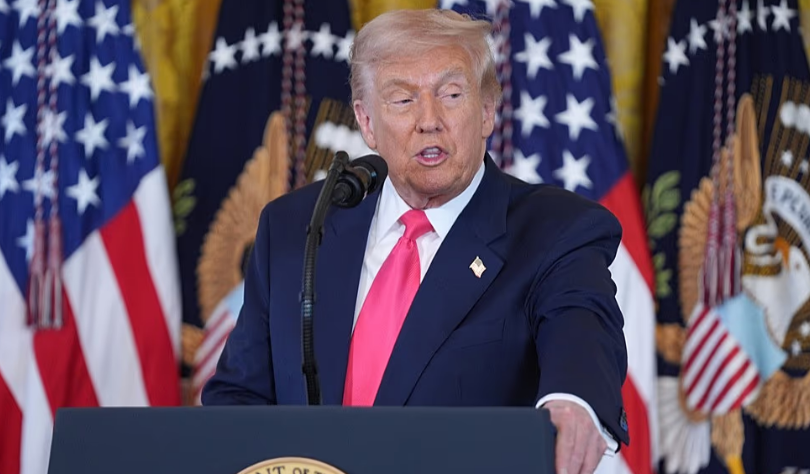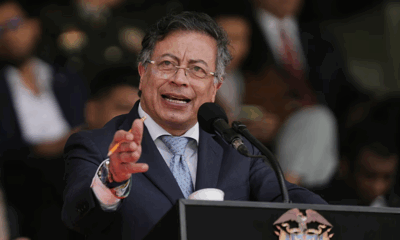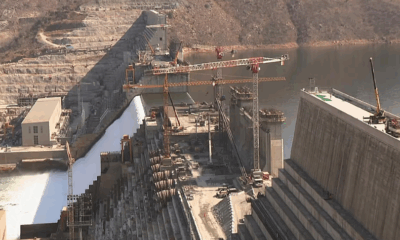News
Spain Floods Leave 217 Dead as Social Media Accounts Help Search for the Missing
In the aftermath of deadly flash floods that swept through eastern Spain, over 217 people have been confirmed dead, and many remain unaccounted for as rescue and recovery efforts intensify. Among the hardest-hit areas are the regions surrounding Valencia, where families continue to seek loved ones who disappeared amid the devastation. Social media, specifically a page called DANA Desaparecidos, has become a vital tool for the public to share images and information about those still missing.
Photos shared on DANA Desaparecidos capture what were once happy moments: a father with his children, family pets, and teenagers posing for selfies. Now, each image represents a plea for help as desperate families post about loved ones who vanished when floodwaters surged through towns and cut off entire communities. While the Spanish government has set up a hotline for reporting missing persons, it has been overwhelmed by the volume of calls, leaving many to rely on platforms like DANA Desaparecidos to disseminate details.
One of the recent posts shows a photo of a woman identified as Mila, last seen leaving the town of Picanya. Another is of a family pet missing since the floods hit. The page, created by Alba Lozano Asencio and her boyfriend Luciano Esguerra, has led to the recovery of around 30 people and numerous pets so far. When someone is found, a post labeled “Localizado” (located) is shared, providing a rare glimmer of hope amid the tragedy. Now, the page is also receiving requests for help with flood cleanup as communities begin the slow path to recovery.
Royal Visit Sparks Outrage Amid Frustrations Over Crisis Response
The Spanish government’s response has faced mounting criticism, with some residents expressing frustration at what they describe as a slow and disorganized effort. This frustration boiled over during a recent visit by King Felipe and Queen Letizia to Paiporta, one of the areas hardest hit by the floods. Crowds reportedly shouted “murderers” and threw mud as the royals arrived, with Prime Minister Pedro Sanchez also facing backlash before being whisked away by security.
In response to the growing anger, the government announced it would deploy an additional 2,500 troops to assist with relief efforts in the affected regions. This is in addition to the 5,000 soldiers already sent to distribute food, assist with cleanup, and protect local stores from looting. Defense Minister Margarita Robles emphasized that the government is committed to addressing residents’ needs during this crisis.
Volunteers Step Up as Weather Warnings Persist
Despite the government deployment, thousands of volunteers from across Spain have also joined relief efforts, with many traveling on foot through mud and debris to reach affected areas. “Frustrating is the word,” said Francisco Bosque, one volunteer. “You feel completely powerless. All you can do is come here and show up.” Another volunteer, 18-year-old Pedro de Juan, echoed this sentiment, adding, “The military and police are helping, but not as much as we hoped.”
The threat from the weather is not yet over. Spain’s national meteorological agency AEMET has issued additional alerts for heavy rain in Barcelona and the provinces of Castellon, Valencia, and Alicante, warning that more sudden flooding could impact already devastated areas. Early Monday morning, Barcelona’s El Prat Airport reported major disruptions, with 50 flights canceled and more than a dozen others diverted due to flooding on the premises. Video footage circulating on social media showed water flooding parts of the airport terminal, with passengers wading through inches of water.
As rescue and recovery efforts continue, residents and authorities remain on high alert for further storms, navigating a balance between ongoing relief work and precautions for more potential floods in the coming days.
News
Chile Holds Presidential Election Amid Crime and Immigration Debate

Chile is holding its presidential election on Sunday, with candidates campaigning on tough stances on crime and immigration. The vote comes four years after progressive Gabriel Boric was elected, at a time when the electorate is deeply divided and a new compulsory voting law adds an element of uncertainty.
Over 14 million Chileans are eligible to vote in the elections, which will also renew the entire Chamber of Deputies and nearly half of the Senate. Security and immigration concerns have dominated the campaign, shifting public attention toward conservative candidates. Evelyn Matthei has called for drug traffickers to be “in jail or in the cemetery,” while Franco Parisi described drug trafficking as “narco-terrorism” and advocated for “bullet or jail.”
The three main contenders offer contrasting visions for Chile’s future. José Antonio Kast, 59, a Republican Party member and the brother of a former minister who served under General Augusto Pinochet, is running for president for the third time. He has focused his campaign on combating crime and illegal immigration. Jeannette Jara, 51, a former minister in Boric’s government and member of the Communist Party, has pledged to expand pensions, lower electricity costs, and construct tens of thousands of new homes. Johannes Kaiser, 49, a former YouTube commentator and legislator, has questioned vaccination programs, opposed abortion, and promised to withdraw Chile from climate agreements and the Inter-American Court of Human Rights.
The introduction of compulsory voting in 2023 could significantly affect turnout, particularly among younger voters. Generation Z, born after 1996, accounts for roughly a third of the electorate, and polls suggest that 30% of these voters have yet to decide. Social media has played a major role, with candidates using platforms like TikTok to mobilize supporters. Jara and Matthei have accused Kast of orchestrating social media campaigns against them, allegations he denies.
Polls indicate a close race. Latest surveys show Jara leading with 30% support, followed by Kast at 22% and Kaiser at 15%. Prediction markets, however, see Kast as the frontrunner with a 70% chance of winning. Analysts suggest that none of the candidates is likely to secure an absolute majority on Sunday, making a run-off election probable on 14 December, likely between Jara and Kast.
A conservative or far-right advance could also reshape the legislative landscape. Polls suggest that both coalitions might achieve a majority in Congress, raising the possibility of a government with limited parliamentary opposition—a scenario not seen in Chile in the past 15 years.
Polling stations opened at 8:00 local time (UTC-4) and will close at 18:00. With crime, immigration, and economic issues at the forefront, this election is being closely watched as a test of Chile’s political direction in a highly polarized environment.
News
Trump Orders Justice Department Probe Into Epstein Ties With Clinton, Other Democrats

Former US President Donald Trump has directed Attorney General Pam Bondi to launch an investigation into connections between convicted sex offender Jeffrey Epstein and several prominent Democrats, including former President Bill Clinton. The move follows the release of new emails by Congress showing Epstein’s communications with influential figures in the US and abroad.
The emails, released Wednesday by the House Oversight Committee, stem from Epstein’s personal accounts and reveal interactions with lawmakers, business leaders, and other high-profile individuals. Trump accused the Democratic Party of attempting to revive what he called the “Epstein hoax” to distract from policy failures and political setbacks, including a recent government shutdown.
“Epstein was a Democrat, and he is the Democrat’s problem, not the Republican’s problem,” Trump said in a statement on social media. He also referenced Clinton, former Treasury Secretary Larry Summers, and LinkedIn founder and major Democratic donor Reid Hoffman, asserting that they had close ties to Epstein.
Trump confirmed that he had instructed Bondi to investigate Epstein’s connections with Clinton, Summers, Hoffman, and financial institutions such as J.P. Morgan Chase. “I will be asking A.G. Pam Bondi, and the Department of Justice, together with our great patriots at the FBI, to investigate Jeffrey Epstein’s involvement and relationship with Bill Clinton, Larry Summers, Reid Hoffman, J.P. Morgan, Chase, and many other people and institutions, to determine what was going on with them, and him,” Trump said.
Clinton has denied any wrongdoing or awareness of Epstein’s criminal activities. J.P. Morgan Chase also issued a statement expressing regret over any association with Epstein, emphasizing that it had ended relations with him years before his arrest. “We regret any association we had with the man, but did not help him commit his heinous acts,” said Patricia Wexler, a spokesperson for the bank.
Bondi announced via social media that she had appointed Jay Clayton, U.S. Attorney for the Southern District of New York, to oversee the investigation. “Clayton is one of the most capable and trusted prosecutors in the country, and I’ve asked him to take the lead,” she said, noting that the Department of Justice would conduct the inquiry with “urgency and integrity.”
The announcement comes a week before the House of Representatives is set to vote on whether the Justice Department should release all files related to Epstein, who died by suicide in a federal prison in 2019 while awaiting trial on sex-trafficking charges. Republican Congresswoman Marjorie Taylor Greene urged Trump to ensure that House Republicans vote in favor of releasing the documents, calling failure to do so a “huge miscalculation.” Greene and four other House Republicans have already filed a discharge petition, which has garnered 218 signatures, seeking the public release of all Epstein-related records.
The investigation highlights ongoing scrutiny of Epstein’s network and connections to prominent political and financial figures, as well as continuing debates over transparency and accountability in Washington.
News
US Nuclear Weapons in Germany Raise Security Questions Amid Rising Global Tensions

As the Bundeswehr marks its 70th anniversary in Berlin, the celebration is shadowed by growing anxiety over Germany’s security. Around 20 US nuclear weapons are currently stored in the country—modernised, ready for use, and symbolic of Washington’s longstanding commitment to Europe’s defence. Yet experts warn that this deterrent may not guarantee protection if the United States hesitates to act in a crisis.
The weapons, believed to be B61-12 hydrogen bombs stored at Büchel Air Base in Rhineland-Palatinate, can be deployed by fighter jets such as the Eurofighter. Their destructive capacity remains immense. The bombs form part of the US nuclear umbrella extended to NATO allies since the Cold War, but concerns have deepened over the reliability of that shield under President Donald Trump, who has questioned aspects of NATO’s mutual defence commitments.
“It has never been and cannot be certain that the US will actually deploy nuclear weapons. It is not a guarantee. But the important thing is that the enemy cannot rule it out,” said political scientist and security expert Karl-Heinz Kamp, a former president of the Federal Academy for Security Policy and an associate fellow at the German Council on Foreign Relations. “Deterrence is pure speculation. It has held up so far, for 50 years.”
Reports from several US media outlets suggest that the United States brought new nuclear weapons to Europe over the summer, with signs including flight paths and the delivery of F-35 fighter jets designed to carry tactical nuclear weapons. Germany has also ordered a fleet of F-35s, expected to arrive in 2026.
Since the invasion of Ukraine in 2022, nuclear deterrence has returned to the forefront of European security debates. Russian President Vladimir Putin has repeatedly brandished nuclear threats, touting his arsenal of about 5,500 warheads and showcasing intercontinental missiles such as the RS-24 “Yars.” Kamp noted that while Putin uses nuclear rhetoric as a political tool, actual deployment remains unlikely. “Whoever shoots first, dies second. That is not a desirable state of affairs,” he said.
Still, questions persist about whether US nuclear weapons in Germany could be relocated to NATO’s eastern flank, including the Baltic states, Poland, or Romania, as a stronger warning to Moscow. Kamp acknowledged this possibility, calling such a move a potential “signal to Russia.”
Anti-nuclear groups, including ICAN Germany, continue to demand the withdrawal of US weapons from German territory, arguing that they make the country a target rather than a protectorate.
While some analysts argue that Germany could technically produce its own nuclear arsenal, Kamp described the idea as politically untenable given Germany’s post-war commitments. The nation is bound by the 1990 Two Plus Four Treaty and the 1969 Nuclear Non-Proliferation Treaty, both of which prohibit it from developing nuclear weapons.
Public opinion also stands firmly against the idea. Only about a third of Germans support developing domestic nuclear arms. For now, Germany’s security remains anchored within NATO, protected not only by the United States but also by the nuclear capabilities of France and the United Kingdom.
-

 Entertainment1 year ago
Entertainment1 year agoMeta Acquires Tilda Swinton VR Doc ‘Impulse: Playing With Reality’
-

 Business1 year ago
Business1 year agoSaudi Arabia’s Model for Sustainable Aviation Practices
-

 Business1 year ago
Business1 year agoRecent Developments in Small Business Taxes
-

 Home Improvement12 months ago
Home Improvement12 months agoEffective Drain Cleaning: A Key to a Healthy Plumbing System
-

 Politics1 year ago
Politics1 year agoWho was Ebrahim Raisi and his status in Iranian Politics?
-

 Business1 year ago
Business1 year agoCarrectly: Revolutionizing Car Care in Chicago
-

 Business1 year ago
Business1 year agoSaudi Arabia: Foreign Direct Investment Rises by 5.6% in Q1
-

 Sports1 year ago
Sports1 year agoKeely Hodgkinson Wins Britain’s First Athletics Gold at Paris Olympics in 800m




























